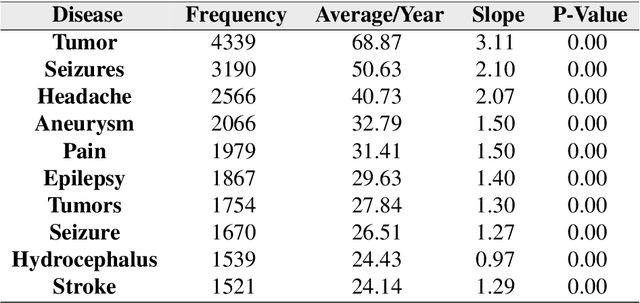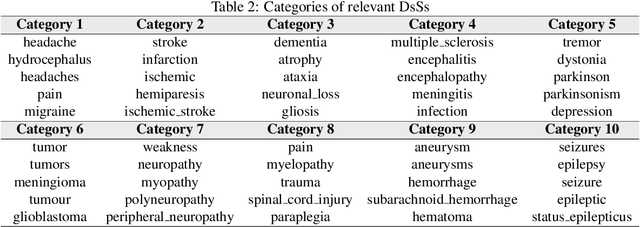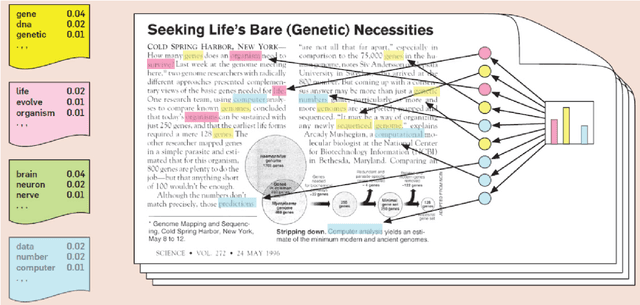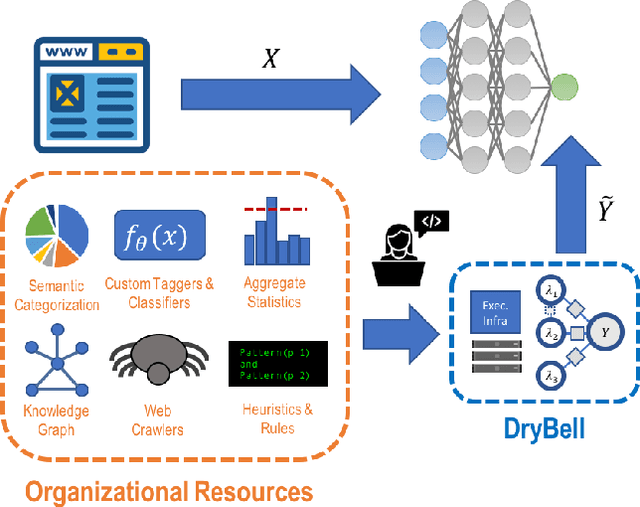Souvik Sen
EMAFusion: A Self-Optimizing System for Seamless LLM Selection and Integration
Apr 14, 2025Abstract:While recent advances in large language models (LLMs) have significantly enhanced performance across diverse natural language tasks, the high computational and financial costs associated with their deployment remain substantial barriers. Existing routing strategies partially alleviate this challenge by assigning queries to cheaper or specialized models, but they frequently rely on extensive labeled data or fragile task-specific heuristics. Conversely, fusion techniques aggregate multiple LLM outputs to boost accuracy and robustness, yet they often exacerbate cost and may reinforce shared biases. We introduce EMAFusion, a new framework that self-optimizes for seamless LLM selection and reliable execution for a given query. Specifically, EMAFusion integrates a taxonomy-based router for familiar query types, a learned router for ambiguous inputs, and a cascading approach that progressively escalates from cheaper to more expensive models based on multi-judge confidence evaluations. Through extensive evaluations, we find EMAFusion outperforms the best individual models by over 2.6 percentage points (94.3% vs. 91.7%), while being 4X cheaper than the average cost. EMAFusion further achieves a remarkable 17.1 percentage point improvement over models like GPT-4 at less than 1/20th the cost. Our combined routing approach delivers 94.3% accuracy compared to taxonomy-based (88.1%) and learned model predictor-based (91.7%) methods alone, demonstrating the effectiveness of our unified strategy. Finally, EMAFusion supports flexible cost-accuracy trade-offs, allowing users to balance their budgetary constraints and performance needs.
Real-Time Object Detection and Recognition on Low-Compute Humanoid Robots using Deep Learning
Jan 20, 2020



Abstract:We envision that in the near future, humanoid robots would share home space and assist us in our daily and routine activities through object manipulations. One of the fundamental technologies that need to be developed for robots is to enable them to detect objects and recognize them for effective manipulations and take real-time decisions involving those objects. In this paper, we describe a novel architecture that enables multiple low-compute NAO robots to perform real-time detection, recognition and localization of objects in its camera view and take programmable actions based on the detected objects. The proposed algorithm for object detection and localization is an empirical modification of YOLOv3, based on indoor experiments in multiple scenarios, with a smaller weight size and lesser computational requirements. Quantization of the weights and re-adjusting filter sizes and layer arrangements for convolutions improved the inference time for low-resolution images from the robot s camera feed. YOLOv3 was chosen after a comparative study of bounding box algorithms was performed with an objective to choose one that strikes the perfect balance among information retention, low inference time and high accuracy for real-time object detection and localization. The architecture also comprises of an effective end-to-end pipeline to feed the real-time frames from the camera feed to the neural net and use its results for guiding the robot with customizable actions corresponding to the detected class labels.
Exploring Diseases and Syndromes in Neurology Case Reports from 1955 to 2017 with Text Mining
May 23, 2019



Abstract:Background: A large number of neurology case reports have been published, but it is a challenging task for human medical experts to explore all of these publications. Text mining offers a computational approach to investigate neurology literature and capture meaningful patterns. The overarching goal of this study is to provide a new perspective on case reports of neurological disease and syndrome analysis over the last six decades using text mining. Methods: We extracted diseases and syndromes (DsSs) from more than 65,000 neurology case reports from 66 journals in PubMed over the last six decades from 1955 to 2017. Text mining was applied to reports on the detected DsSs to investigate high-frequency DsSs, categorize them, and explore the linear trends over the 63-year time frame. Results: The text mining methods explored high-frequency neurologic DsSs and their trends and the relationships between them from 1955 to 2017. We detected more than 18,000 unique DsSs and found 10 categories of neurologic DsSs. While the trend analysis showed the increasing trends in the case reports for top-10 high-frequency DsSs, the categories had mixed trends. Conclusion: Our study provided new insights into the application of text mining methods to investigate DsSs in a large number of medical case reports that occur over several decades. The proposed approach can be used to provide a macro level analysis of medical literature by discovering interesting patterns and tracking them over several years to help physicians explore these case reports more efficiently.
Snorkel DryBell: A Case Study in Deploying Weak Supervision at Industrial Scale
Dec 02, 2018



Abstract:Labeling training data is one of the most costly bottlenecks in developing or modifying machine learning-based applications. We survey how resources from across an organization can be used as weak supervision sources for three classification tasks at Google, in order to bring development time and cost down by an order of magnitude. We build on the Snorkel framework, extending it as a new system, Snorkel DryBell, which integrates with Google's distributed production systems and enables engineers to develop and execute weak supervision strategies over millions of examples in less than thirty minutes. We find that Snorkel DryBell creates classifiers of comparable quality to ones trained using up to tens of thousands of hand-labeled examples, in part by leveraging organizational resources not servable in production which contribute an average 52% performance improvement to the weakly supervised classifiers.
 Add to Chrome
Add to Chrome Add to Firefox
Add to Firefox Add to Edge
Add to Edge